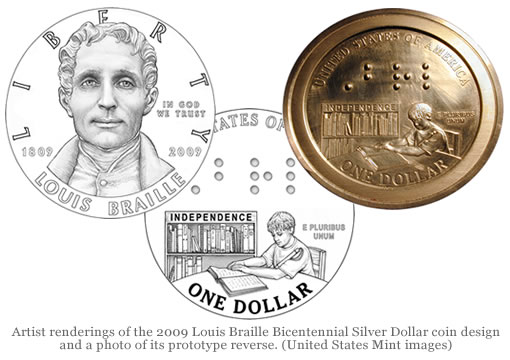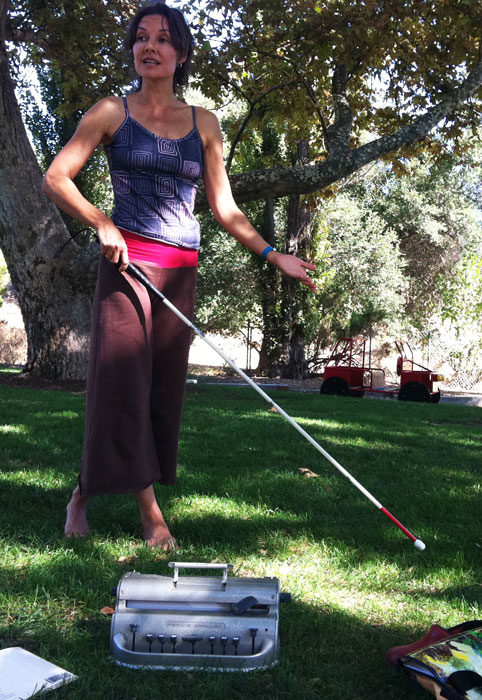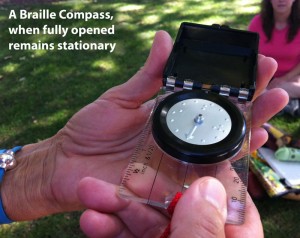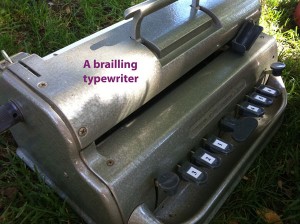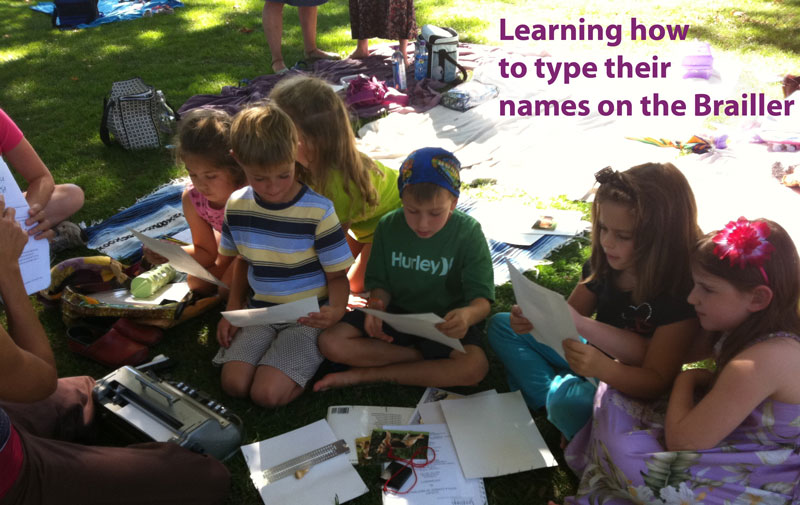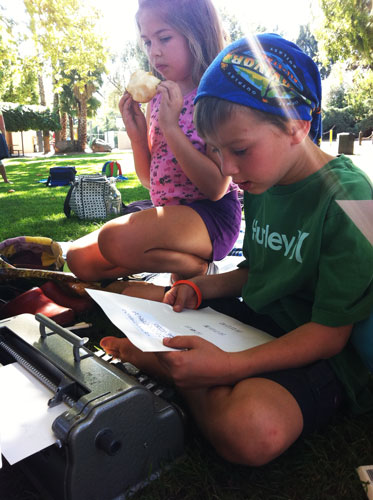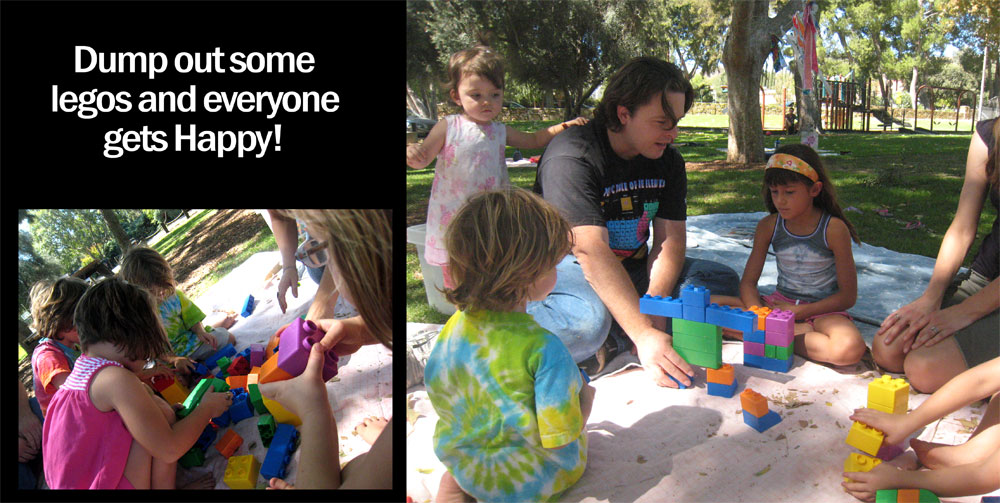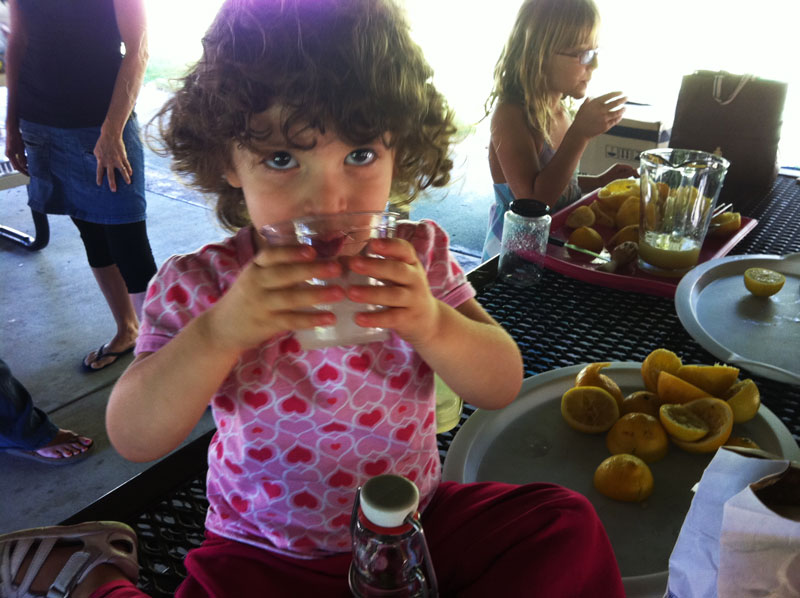 rickety Cricket stadium in NC, where Cal Ripken got his start with the AA Orioles. The part that thrilled me as a child, was that you could throw your peanut shells 30 feet below on the dirt under the wooden bleachers. This
rickety Cricket stadium in NC, where Cal Ripken got his start with the AA Orioles. The part that thrilled me as a child, was that you could throw your peanut shells 30 feet below on the dirt under the wooden bleachers. This 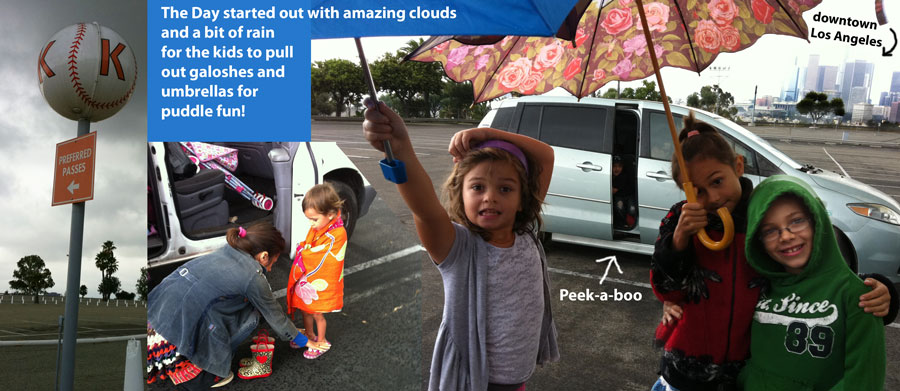 memory transcended into a spontaneous round of,- “Take me out to the ballgame.,.buy me some Peanuts and Cracker Jack!” Thus endearing another generation to the game of Baseball. Thanks again to our coordinator “Special K” for a great fieldtrip.
memory transcended into a spontaneous round of,- “Take me out to the ballgame.,.buy me some Peanuts and Cracker Jack!” Thus endearing another generation to the game of Baseball. Thanks again to our coordinator “Special K” for a great fieldtrip.



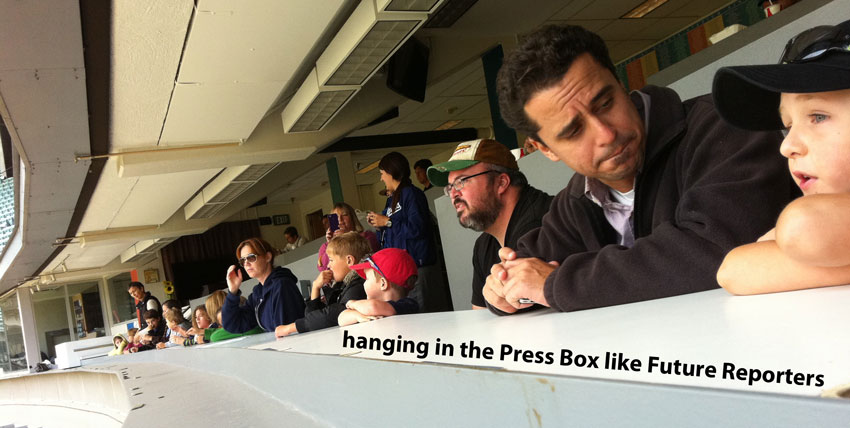
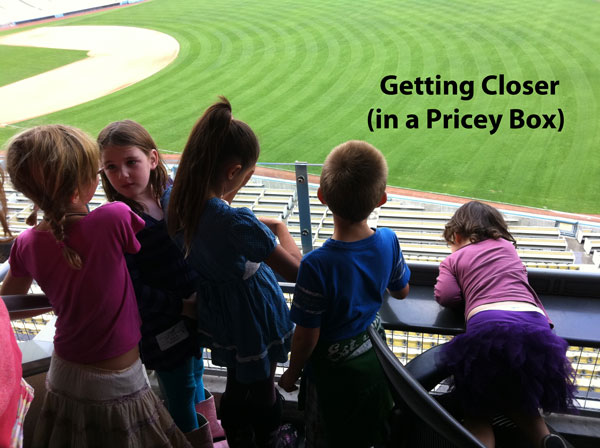



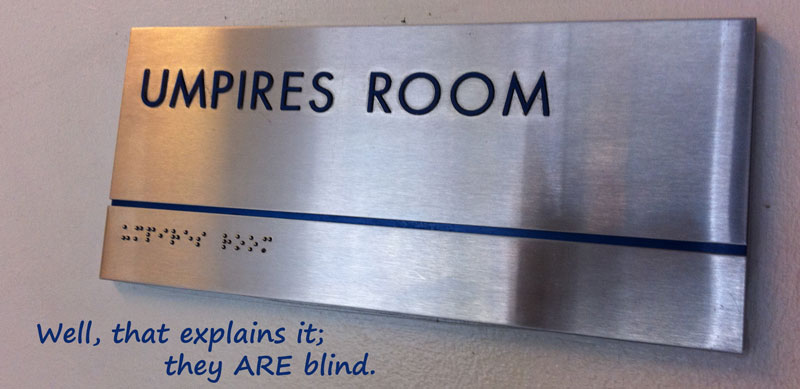

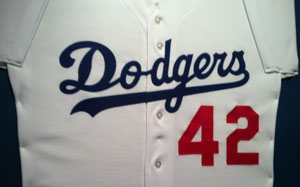
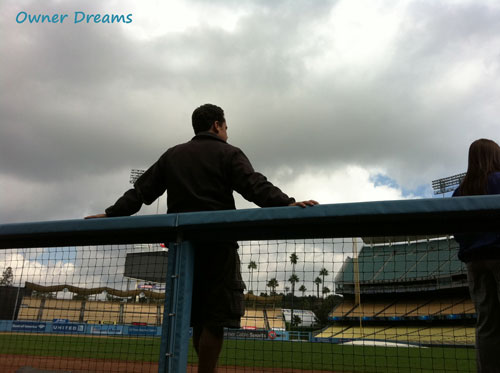


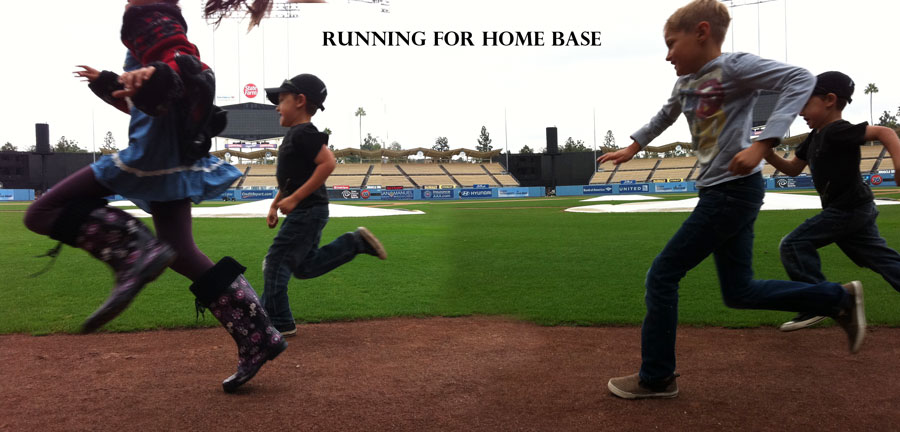 ]]>
]]>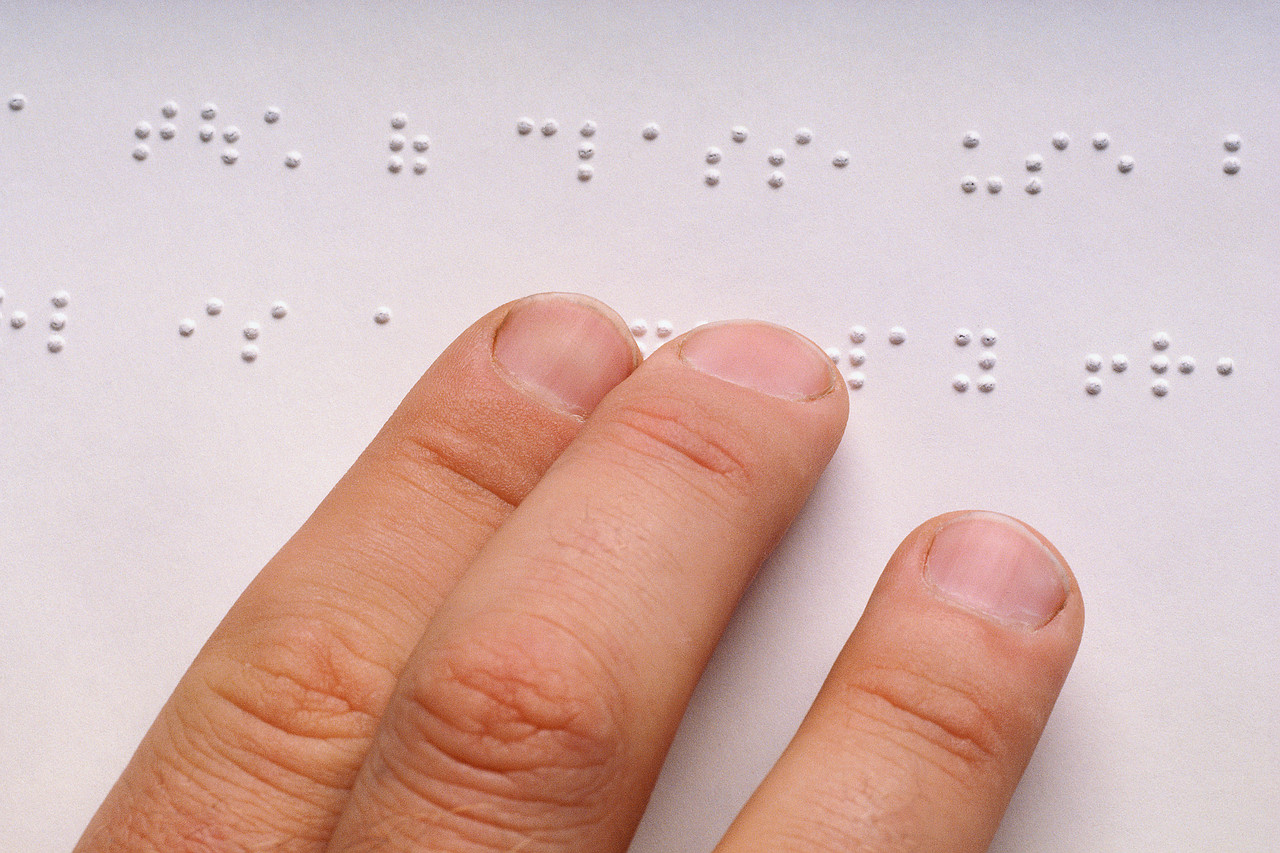 Karen was a teacher for children who were blind and visually impaired. Visually-impaired – is the term for someone whose vision is compromised so much that they can’t do normal functions. Total blindness is when someone can not tell the difference between light or dark. Legally blind is someone who is visually impaired to the point that they can not read. I am legally blind with out my glasses or contacts.
Karen was a teacher for children who were blind and visually impaired. Visually-impaired – is the term for someone whose vision is compromised so much that they can’t do normal functions. Total blindness is when someone can not tell the difference between light or dark. Legally blind is someone who is visually impaired to the point that they can not read. I am legally blind with out my glasses or contacts.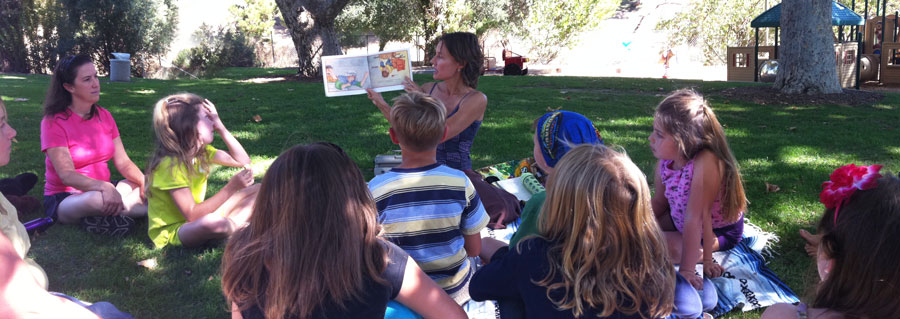
Karen shared the story of Louis Braille (1809-1852), the inventor of the Braille alphabet.  Kids broke into teams to play decoding games to get a better sense of how the braille alphabet works. We gained a better understanding of how a person uses a white cane or enhances their lives with a seeing eye dog.
Kids broke into teams to play decoding games to get a better sense of how the braille alphabet works. We gained a better understanding of how a person uses a white cane or enhances their lives with a seeing eye dog.
This week at home, our family will be taking turns blindfolding each other and counting how many steps it takes each of us to get to the bathroom, bedroom, refrigerator and our mailbox. Find your own ways to help your children experience life as visually-impaired.
This understanding builds awareness, compassion and normalcy for those with differences then themselves as well as instilling them with a sense of accomplishment for taking on a new challenge.
Have Fun Exploring. And if your kids come up with a great idea - Go For It!
Thank you Karen for all the fun and unique ways you got our kids (and parents) excited about Braille. This is a wonderful way to understand more people in our community and the world who experience life differently and the same as we do! Thank you!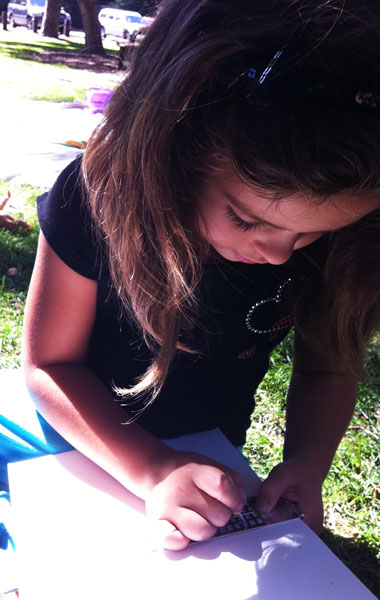
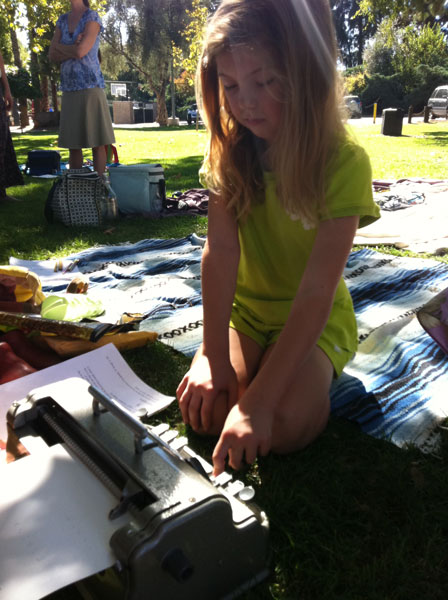


Coloring a Giant Get Well Card for our Friend in the Hospital
]]>
A few years [...]]]>
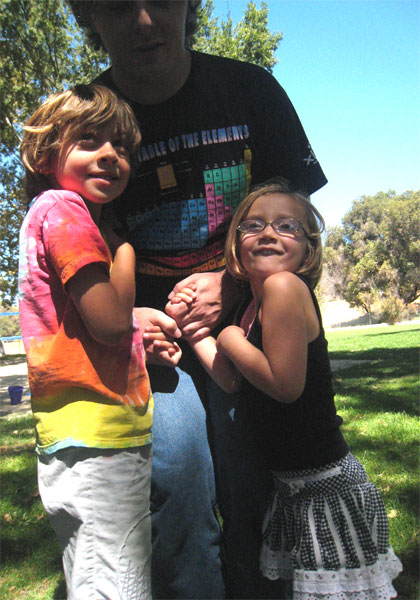
2009 Not just holding hands; Aran is Oxygon covalently bonded to the two hydrogen atoms
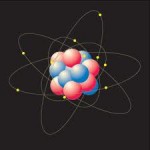 ** SUPPLIES REQUEST** We will need balls to play our games and replicate molecular bonding, create a visual for electron orbits around nuclei, and possibly even track atomic particles in our bubble chamber. Artsy Bubble Chambers.
** SUPPLIES REQUEST** We will need balls to play our games and replicate molecular bonding, create a visual for electron orbits around nuclei, and possibly even track atomic particles in our bubble chamber. Artsy Bubble Chambers.
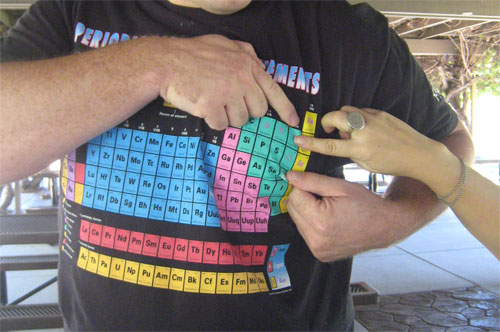 A few years ago, I realized how most kids (as young as four) are budding molecular scientists. First off they are interested in what is in everything – matter. They seem comforted to learn that everything is made of one type of thing – atoms. These small building blocks makes sense to them – as do Legos. The idea that our world
A few years ago, I realized how most kids (as young as four) are budding molecular scientists. First off they are interested in what is in everything – matter. They seem comforted to learn that everything is made of one type of thing – atoms. These small building blocks makes sense to them – as do Legos. The idea that our world 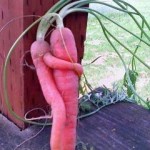 (matter) can be broken down into smaller and smaller pieces as well as built up into massive structures is consistent with their growing awareness of the world.
(matter) can be broken down into smaller and smaller pieces as well as built up into massive structures is consistent with their growing awareness of the world.
They are learning how does a carrot grow? It starts as a tiny seed and gains more building blocks. And last year my daughters were excited to learn about the parts to their bodies (bones to support them, blood super highways, brains with nerve highways, and skin to hold it all together). Alot of little things make the magical people they are.
Moreover, many children are intrigued by the moon, stars and the idea that other planets like their own are orbiting in space. They can’t see these giant objects orbit with their own eyes, nor can they see electrons orbiting the nucleus of atoms, but they don’t have to see them to envision them with excitement. And I believe that if you are excited (as adults or kids) – learning becomes fun and most likely – permanent. Smiles demarcate the success of conveying concepts by playing games with toys as well as letting the kids go wild with arts and crafts.
This week we will revisit the basics of atoms using Legos and run-around ball games before taking my molecular scientists on a hunt for valence electrons. Some children will be atoms that make Ionic molecular bonds (give up an electron in making the bond with atoms), whilst other kids and parents make Covalent molecular bonds (share an electron with another atom). Don’t let the big science words scare you, they consist of the same alphabet building blocks of small words. Look at this great tutorial of how the chemical bonds of salt, water and sugar work on a molecular level. I will be recreating this for the kids with legos and the balls they bring. Determine @ home which dissolves faster into water: salt or sugar?
]]>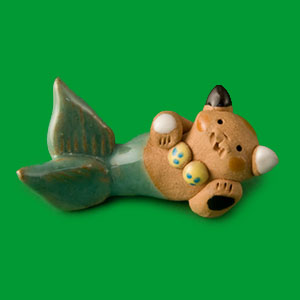 Kids will be inventing their own creatures by combining two animals (or more) into one. By morphing the top half of a cat with the tail of a fish – Voila a new species. They will sculpt them, name them and who knows what else. ALL the clay is being donated by Victoria (big M&B thank you!) Of course if any one parent or child wants to do something else with the clay – that always receives a thumbs up @ Mudpies & Butterflies! Self-expression is key – as is Confidence. Which is where this next request comes from…
Kids will be inventing their own creatures by combining two animals (or more) into one. By morphing the top half of a cat with the tail of a fish – Voila a new species. They will sculpt them, name them and who knows what else. ALL the clay is being donated by Victoria (big M&B thank you!) Of course if any one parent or child wants to do something else with the clay – that always receives a thumbs up @ Mudpies & Butterflies! Self-expression is key – as is Confidence. Which is where this next request comes from…
Can we only practice open-ended questions around the clay play?
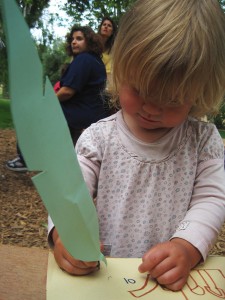 What happens when kids draw or paint? Oftentimes, parents, teachers, or elders say – “What is that?” Due to past experiences for the child, I witness the energy shift and a struggle begin with in the child. Bodies slump; they take deep, preparing breaths; and sometimes art supplies drop from their hands. They are pulled out of “being in the art”to fulfill someone else’s need. Who has witnessed a child’s frustration when a well-intentioned comment about what they have drawn doesn’t match at all to what they were creating. Have you also ever noticed, that when kids are working in proximity to each other, they OBSERVE each others work, and usually wait for the actual artist/owner to speak about their piece before offering any comments. Most young kids are intuitively aware that the journey as well as the end product belong to the person who is creating. Hmmm…
What happens when kids draw or paint? Oftentimes, parents, teachers, or elders say – “What is that?” Due to past experiences for the child, I witness the energy shift and a struggle begin with in the child. Bodies slump; they take deep, preparing breaths; and sometimes art supplies drop from their hands. They are pulled out of “being in the art”to fulfill someone else’s need. Who has witnessed a child’s frustration when a well-intentioned comment about what they have drawn doesn’t match at all to what they were creating. Have you also ever noticed, that when kids are working in proximity to each other, they OBSERVE each others work, and usually wait for the actual artist/owner to speak about their piece before offering any comments. Most young kids are intuitively aware that the journey as well as the end product belong to the person who is creating. Hmmm…
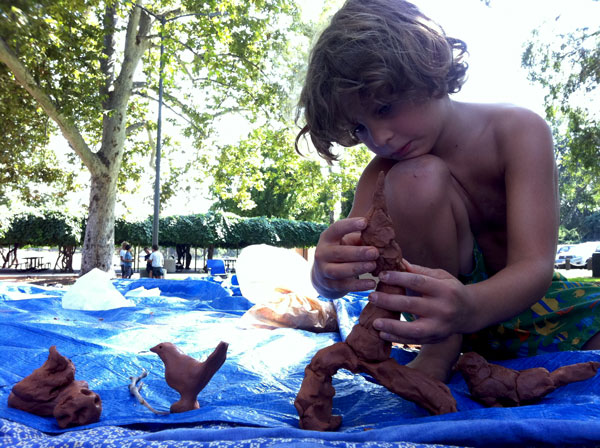 Are our inquiries stifling the creative juices flowing through their hands holding crayons, pencils, or paint brushes? And why does the art piece have to be something? The stimulation of the process is the main event for these early years: the bumps on the paper, the firmness of the tool in their hands, the way pigment thins as it is smeared across the page. All these “mini-experiments” are impacting their brains along with the smell of the room, the rumble in their belly, and the light casting shadows. And if the artistic idea they started with isn’t spoken aloud, a child will confidently, freely, let it morph into something else. Or maybe the magical journey of blurring colors into oblivion or the intense release of rubbing a crayon to a nub becomes so uplifting, the initial image is unwittingly
Are our inquiries stifling the creative juices flowing through their hands holding crayons, pencils, or paint brushes? And why does the art piece have to be something? The stimulation of the process is the main event for these early years: the bumps on the paper, the firmness of the tool in their hands, the way pigment thins as it is smeared across the page. All these “mini-experiments” are impacting their brains along with the smell of the room, the rumble in their belly, and the light casting shadows. And if the artistic idea they started with isn’t spoken aloud, a child will confidently, freely, let it morph into something else. Or maybe the magical journey of blurring colors into oblivion or the intense release of rubbing a crayon to a nub becomes so uplifting, the initial image is unwittingly 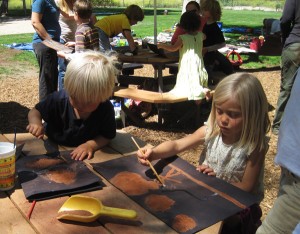 sacrificed. We parents, waiting in the wings for evidence of burgeoning Picassos, may be coveting that initial image too greatly. With emphasis on genius, we could be preventing a more natural education of their world from developing.
sacrificed. We parents, waiting in the wings for evidence of burgeoning Picassos, may be coveting that initial image too greatly. With emphasis on genius, we could be preventing a more natural education of their world from developing.
In my mind, clay is powerful in the World of Art for Children. It reeks of PLAY, not expectations. Children (and adults) who mistrust the looming liberty of 2-dimensional art, are willing to give this crazy, squooshy mud a chance. Even if a child has tightened their expected reign of reality in drawing or painting, a child might explore imaginatively with clay. And did you know that by working with a piece of clay in your hands and not on a table, helps us readily pull a shape out of the lump instead of attaching pieces to it. This calls upon more organic deductive reasoning, similar to how we find shapes in clouds. This is minimizes frustration and maximizes creativity. Clay can be pinched in here and smoothed over there, allowing their imagination and experiential knowledge to wish the artwork into existence.
 To inhibit critique and foster maximum creativity, I am asking everyone (including myself) to practice open-ended inquiries with each other during CLAY play. (This can be done with drawing and painting as well.) The idea, is that through active listening to thoughts and ideas, our children will feel that their unique perceptions and ideas are worthy. But to do this , we have to convince them we will patiently listen to whatever they choose to share. You can do this with an open-ended question that invites them to share and respectfully await their response. Not responding isn’t necessarily a cue to repeat the question louder, but a opportunity to witness your child deeply engrossed “in the art.” As you wait, you can just breath and watch or grab your own clump of clay and work beside them.
To inhibit critique and foster maximum creativity, I am asking everyone (including myself) to practice open-ended inquiries with each other during CLAY play. (This can be done with drawing and painting as well.) The idea, is that through active listening to thoughts and ideas, our children will feel that their unique perceptions and ideas are worthy. But to do this , we have to convince them we will patiently listen to whatever they choose to share. You can do this with an open-ended question that invites them to share and respectfully await their response. Not responding isn’t necessarily a cue to repeat the question louder, but a opportunity to witness your child deeply engrossed “in the art.” As you wait, you can just breath and watch or grab your own clump of clay and work beside them.
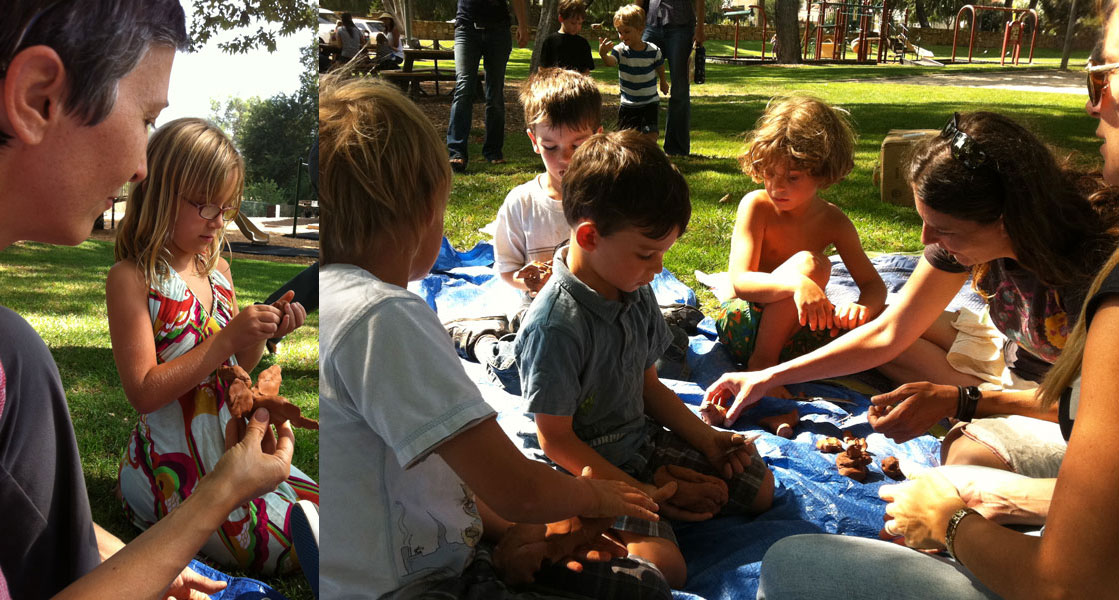 A good question to start with is, “What is happening now?” This might seem uncomfortable if you don’t often find yourself asking your children for updates. Adults are used to naming things, identifying and communicating what we see to our kids. But phrases that encourage more than a single word response, tell the other person “I really want to hear YOUR answer.” This communicates that we are prepared to wait as long as they need to respond. Another good line is, “I would love to know how did you do that?” Yes, you probably know how they did it, but we aren’t listening for the specific answer, but opening their gates of creativity. We are empowering them to feel content with their expression.
A good question to start with is, “What is happening now?” This might seem uncomfortable if you don’t often find yourself asking your children for updates. Adults are used to naming things, identifying and communicating what we see to our kids. But phrases that encourage more than a single word response, tell the other person “I really want to hear YOUR answer.” This communicates that we are prepared to wait as long as they need to respond. Another good line is, “I would love to know how did you do that?” Yes, you probably know how they did it, but we aren’t listening for the specific answer, but opening their gates of creativity. We are empowering them to feel content with their expression.
Some of you may recognize that your kid doesn’t have a problem opening up and instead tells you EVERYTHING. That is great! Bu there will be a time when this free sharing of thoughts and questions will end. Usually because they think you don’t listen enough or they think they or their peers know more than you do. And as pre-teens or teens in a world filled with dangerous temptations, you will wish they would tell you everything again. Honing this skill now, is exactly how you will bridge those years. Here is your chance to build a foundation that you can both tap into down the road, because they will know the difference between you patiently listening versus just going through the motions.
 With follow up question like, “Can you tell me more about it?“ and their delight in sharing freely with you lets you know that you are on the right track. And then, all of sudden, you are tempted to correct the way they made something. Don’t point it out. Instead focus on their body language and how they are feeling. If they are building an animal ask,
With follow up question like, “Can you tell me more about it?“ and their delight in sharing freely with you lets you know that you are on the right track. And then, all of sudden, you are tempted to correct the way they made something. Don’t point it out. Instead focus on their body language and how they are feeling. If they are building an animal ask,  “What would it be like to ride a creature like that?“ Help them conjure their feelings or experiences. Or, “What would it feel like to pet that animal?” Or if it was a place, “What would happen if we traveled there?“ This may bring their attention to a detail they haven’t gotten too before or maybe not. Paintings and sculpture, hold less internal restrictions if children are tapping into their past experiences and perceptions of how the world works and not by surfing our expectations of what the final product should look like.
“What would it be like to ride a creature like that?“ Help them conjure their feelings or experiences. Or, “What would it feel like to pet that animal?” Or if it was a place, “What would happen if we traveled there?“ This may bring their attention to a detail they haven’t gotten too before or maybe not. Paintings and sculpture, hold less internal restrictions if children are tapping into their past experiences and perceptions of how the world works and not by surfing our expectations of what the final product should look like.
If playing with art supplies (or sports) ends up with us feeling empty, misunderstood or lacking, why try anything new? My goal with this activity is to help M&B kids to feel that their voice and perceptions are appreciated by parents, peers, friends and society. And as their caregivers, we represent the world who believe that art (and life) is not a world of right and wrong, but can open up wide to respectfully hold many things in between. And even if the piece of art doesn’t end up fully-realized to match their image in their head, the experience of thinking about it, manipulating it, and sharing can hold positive feelings for us all.
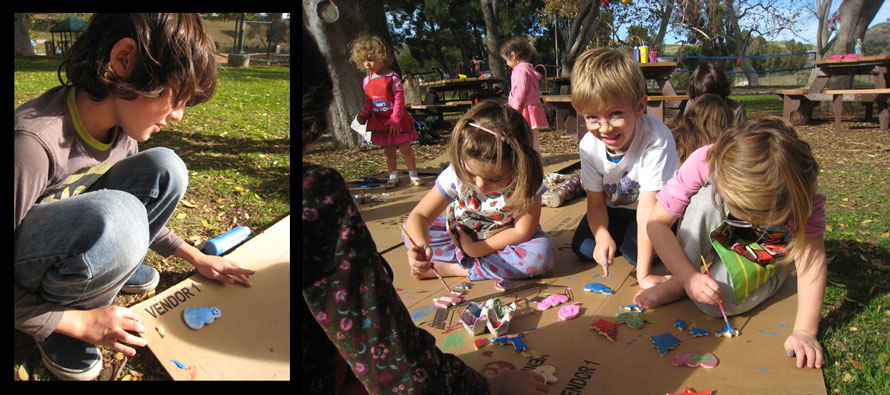
Recipes for two types of reusable play clay. And 50 questions to spark fun & communication!
]]>Stir this up with a bit of Construction and Voila – a FUN PARKDAY.
Anyone can share in the fun stations: 1) lemonade stand construction; 2) stand decoration; 3) prepping & squeezing lemons; 4) [...]]]>
 Kiddo Entrepreneurs Unite !
Kiddo Entrepreneurs Unite !
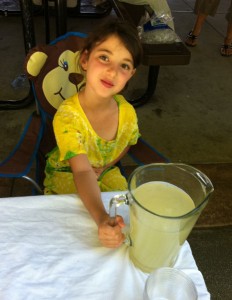 Everyone is nostalgic for lemonade stands. And we have a number of enterprising children at our parkday.
Everyone is nostalgic for lemonade stands. And we have a number of enterprising children at our parkday.
Stir this up with a bit of Construction and Voila – a FUN PARKDAY.
Anyone can share in the fun stations: 1) lemonade stand construction; 2) stand decoration; 3) prepping & squeezing lemons; 4) making lemonade; 5) selling lemonade & 6) washing & running cups. And we will need some SUPPLIES. A few cardboard boxes to make a stand or two (I can bring a box & boxcutter). Some poster-board and markers to decorate and announce the stand. We caught some cars, joggers and dog-walkers under the shade of trees by park entrance.
 The ingredients haven’t changed- Lemons (anyone have a tree?), sugar, water & Ice. (I will bring a few knives and cutting boards and a few squeezers); Squeezers are fun, but kids can easily squeeze lemons by hand or at least roll them. Pitchers (washed out juice bottles) & cups as well as a few containers for the kids to pour their lemon juice into before it gets added. We can even set up a washing station to reuse cups.
The ingredients haven’t changed- Lemons (anyone have a tree?), sugar, water & Ice. (I will bring a few knives and cutting boards and a few squeezers); Squeezers are fun, but kids can easily squeeze lemons by hand or at least roll them. Pitchers (washed out juice bottles) & cups as well as a few containers for the kids to pour their lemon juice into before it gets added. We can even set up a washing station to reuse cups.
…………..If anyone’s child wants to sell or accept donations for other items like flowers, fruit, baked goods or who knows what – well that is up to your family but perfectly fine with me.
 …………….And parents – be prepared for the mess and accidents. How mistakes are handled at this age affects AMBITION and SELF-ESTEEM.
…………….And parents – be prepared for the mess and accidents. How mistakes are handled at this age affects AMBITION and SELF-ESTEEM.
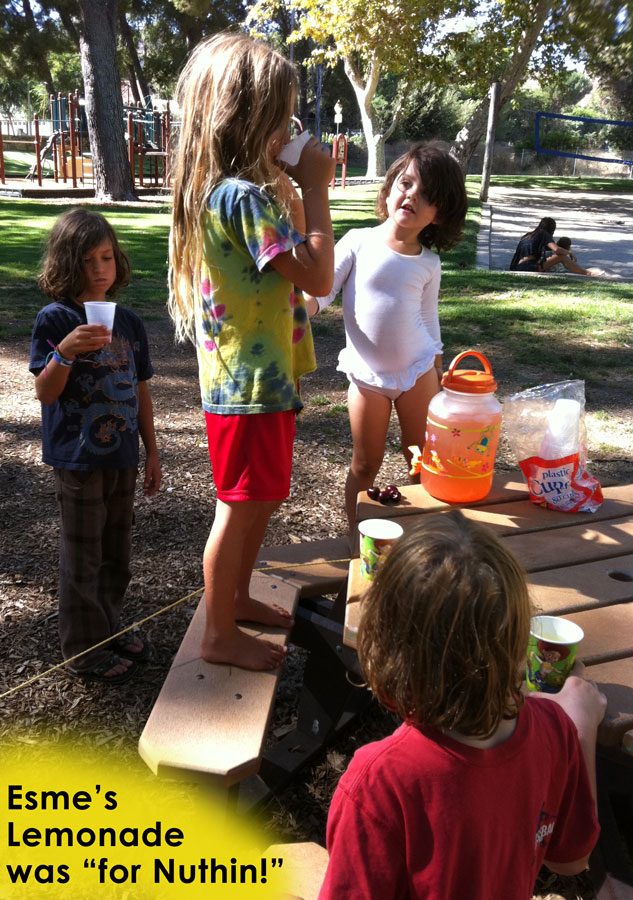
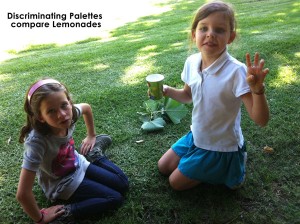
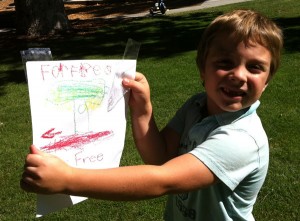
Parents manned their stations leading the kids on a [...]]]>
 Take the MudPies & Butterflies Nature Pledge Today.
Take the MudPies & Butterflies Nature Pledge Today.
1. Respect All Living Things
2. Observe (Nature)
3. Protect the Earth you Play upon
In order to protect the living things in your neighborhood, backyard or park, we must find out what they are.
 Parents manned their stations leading the kids on a nature scavenger hunt where they recorded what they saw in their sketchbooks. We all observed what we saw in the grass, in the trees, dirt and sky. Magnifying glasses only add to the fun! At MudPies & Butterflies EVERYONE is a scientist and/or a naturalist. On this day, they were Nature detectives
Parents manned their stations leading the kids on a nature scavenger hunt where they recorded what they saw in their sketchbooks. We all observed what we saw in the grass, in the trees, dirt and sky. Magnifying glasses only add to the fun! At MudPies & Butterflies EVERYONE is a scientist and/or a naturalist. On this day, they were Nature detectives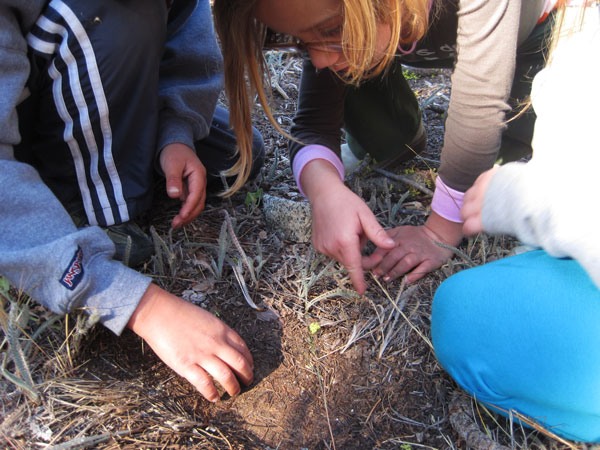 who drew and counted the wildlife and plantlife around them. By recording what you witness outdoors in a Nature Journal it will make a visit or camping trip even more memorable. In order to Care for Nature, we have to NOTICE it.
who drew and counted the wildlife and plantlife around them. By recording what you witness outdoors in a Nature Journal it will make a visit or camping trip even more memorable. In order to Care for Nature, we have to NOTICE it.
This week, I invite you to take a second look in your backyard. Find the smallest animal (insect) and the biggest. Find the plant or tree with the greatest variety of colors or shades. Take a walk in your neighborhood and LISTEN for nature. Even concrete neighborhoods harbor animal and plant life. If you look for unique animal and plant life, YOU will find them!

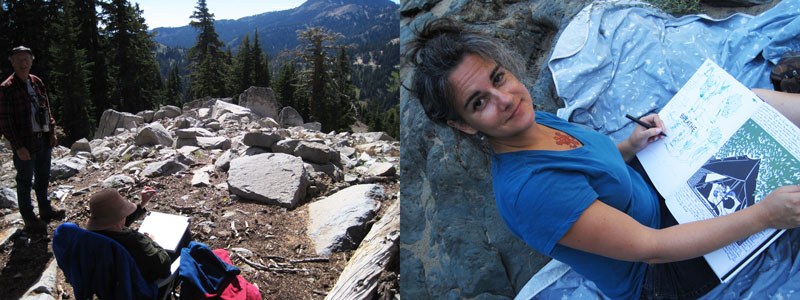
When you take time to sketch Nature, you notice the coolest things you missed!
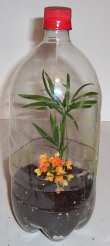 What the heck is a BIOME anyway?
What the heck is a BIOME anyway?


When you take time to sketch Nature, you notice the coolest things you missed!
 What the heck is a BIOME anyway?
What the heck is a BIOME anyway?A biome is large area where the plants and animals have adapted in their own unique ways to the water, heat & soil specific to that area, like a rainforest, desert, or prairie. We will discuss Biomes, Habitats & Ecosystems. And Everyone will make a miniature-biome - a small handmade terrarium that will fit in your home (don’t forget your bottle) -It takes a little more care to create, but you can make one out of a glass bottle if your family avoids using plastics.
In order to make our Mini-Biome, I supplied organic dirt, some seeds & seedlings, activated charcoal, pebbles and moss to layer our terrariums with built in filters. I am a big believer that in bringing nature indoors to more closely observe what happens will only increase the awareness and conservation outdoors.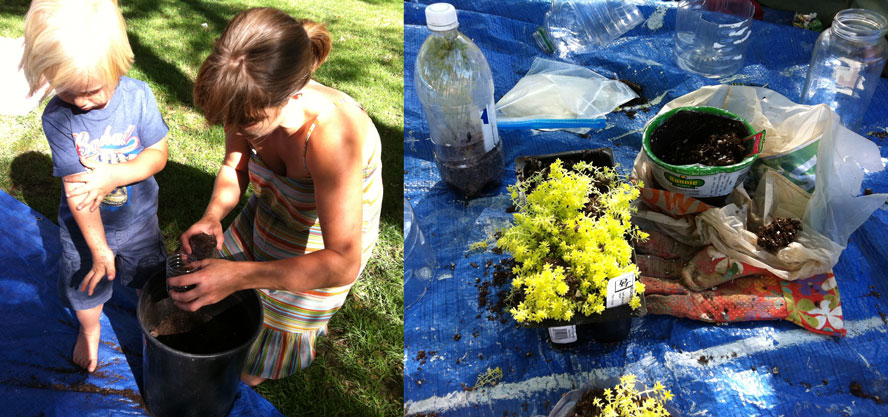

Three Biomes: Rainforest Canopy, Desert Life & Swamp

Three Biomes: Rainforest Canopy, Desert Life & Swamp
Take the Biome Challenge with your family to see how well you know your surroundings.
• Identify four fruits and/or vegetables that are in season now (prepare them this week!)
• Identify the closest body of water to you.
• Name your state flower or bird.
• Name the geological conditions that define the land in your area, such as bodies of water or valleys, etc.
• How often does the weather in your region affect your activities?
• What are the natural signs of the change of seasons in your area? What do you like best and least about each one?
• When did you last encounter wildlife in your neighborhood?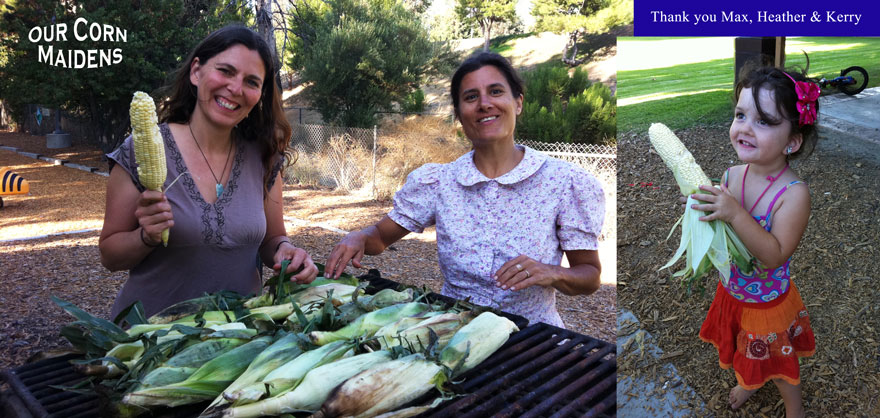
-
- Three Biomes: Rainforest Canopy, Desert Life & Swamp
]]>
- Three Biomes: Rainforest Canopy, Desert Life & Swamp
